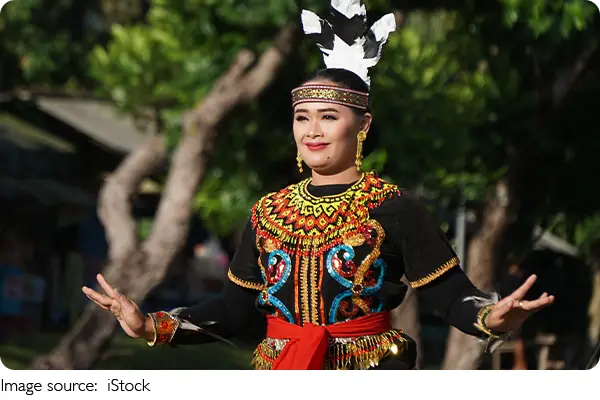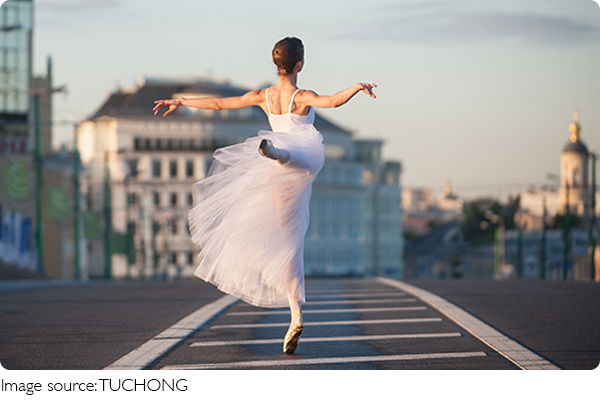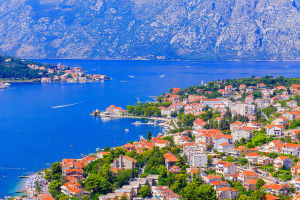Fusion of Dance Styles

Dance has always been a dynamic, evolving art form. From traditional folk dances to modern ballet, it has continuously adapted to the changing cultural landscape.
In recent years, a growing trend in the dance world has been the fusion of traditional dance forms with contemporary styles.
This blending of the old and the new allows for the creation of unique, innovative performances that connect with audiences in fresh and exciting ways.
But how do these dance styles come together, and what is the impact of this cross-cultural integration?
In this article, we will explore the fascinating world of cross-cultural dance fusion, examining how traditional dance and modern elements collide to create something entirely new. Let's dive into this dynamic blend of movement, culture, and creativity!

The Essence of Traditional Dance
Traditional dances, often passed down through generations, are deeply rooted in culture, history, and symbolism. These dances are more than just movement; they often represent stories, rituals, and beliefs of particular communities. For example, African dances are deeply connected to communal activities, with rhythmic movements representing spiritual or life-cycle events.
Traditional dance is also typically tied to specific music, costumes, and settings, creating a distinct and immersive experience for both performers and audiences. These forms of dance are often highly structured, with precise rules that dictate how movements are performed. While they are rich in tradition and meaning, they can sometimes feel rigid, constrained by the cultural frameworks in which they developed.
The Rise of Modern Dance
On the other hand, modern dance emerged as a form of rebellion against the rules and traditions of classical ballet and other conventional dance forms. Pioneers like Martha Graham and Isadora Duncan sought to express individual freedom, emotion, and movement in more fluid, abstract ways.
Modern dance prioritizes personal expression and creativity, often using the body in unconventional ways. The emphasis is on improvisation, emotion, and the breaking of traditional boundaries.
Modern dance allows for more freedom and experimentation in choreography, which makes it an ideal platform for exploring new movement possibilities and ideas. With the advent of urban street styles, hip-hop, and even contemporary ballet, modern dance has opened doors for an exciting range of influences to come into play, from global rhythms to experimental techniques.
This fusion of modern styles with traditional dance has led to the emergence of new, innovative dance forms that bridge cultural and temporal gaps.
The Fusion of Traditional and Modern Elements
Now, when we mix these two worlds—traditional and modern dance—we find an exciting hybridization that opens up endless possibilities. This fusion is often seen in contemporary dance performances, where dancers incorporate elements of classical forms into modern choreography. A classic example of this is the incorporation of hip-hop moves into contemporary ballet performances. In some cases, traditional dance steps from African or Asian cultures are blended with the rhythmic and emotional freedom of modern jazz or street dance.
The beauty of this fusion is in its ability to respect the roots of traditional dance while breathing new life into it. These performances might involve the precise hand movements from classical traditions combined with the fluid, expressive quality of contemporary dance, forming a beautiful interplay between structured tradition and free expression.
Impact on Global Dance Culture
The fusion of traditional and modern dance styles has had a profound impact on the global dance community. It has not only brought new, exciting performances to the stage but has also made traditional dance forms more accessible to a wider audience.
This cross-cultural integration allows different cultures to share their stories and artistic expressions, creating a space where dancers from diverse backgrounds can come together and collaborate.
Moreover, the fusion of dance styles encourages the breaking down of cultural boundaries. Audiences who may not have been exposed to a particular traditional dance are now able to appreciate it in a new context. At the same time, dancers and choreographers are able to challenge the norms of their own cultural heritage by blending it with new influences and global trends.
The result is a rich, diverse, and ever-evolving dance culture that continues to captivate people around the world.
Challenges and Considerations
While the fusion of traditional and modern dance is exciting, it also comes with its challenges. One key concern is the risk of cultural appropriation. When traditional dances are incorporated into modern performances, there is a fine line between respectful adaptation and misrepresentation.
Dancers and choreographers must be mindful of the cultural significance behind the movements they are blending and ensure that they are honoring the traditions they are drawing from.
Additionally, the fusion of dance styles can sometimes dilute the essence of the traditional form. It's important that the integrity of the original dance is preserved while still allowing for innovation and creativity. Choreographers must strike a balance between staying true to the traditional elements and embracing the freedom of modern expression.
Conclusion: A New Dance Revolution
In conclusion, the fusion of traditional and modern dance represents a thrilling new chapter in the evolution of dance. By combining the rich history and structure of traditional forms with the freedom and creativity of modern styles, a new and dynamic dance language is emerging.
This fusion allows dancers to explore new artistic possibilities while staying connected to their cultural roots. It opens up new avenues for collaboration, cross-cultural exchange, and innovation in the dance world.
Have you ever witnessed a performance where traditional dance forms were blended with modern styles? How did it make you feel?
The next time you watch a fusion performance, take a moment to appreciate the blending of these different worlds and the artistry involved in making them work together.
-
 Exotic Fruit WondersDiscover Rare and Exotic Fruits from Around the World That Will Surprise Your Taste Buds!
Exotic Fruit WondersDiscover Rare and Exotic Fruits from Around the World That Will Surprise Your Taste Buds! -
 Charming Kotor JourneyYou Won’t Believe This Fairytale Town Exists—Why Kotor, Montenegro Is Stealing Everyone’s Heart?!
Charming Kotor JourneyYou Won’t Believe This Fairytale Town Exists—Why Kotor, Montenegro Is Stealing Everyone’s Heart?! -
 Spa Bathroom: 12 Tricks!Want a spa-like retreat at home? Try these simple, budget-friendly hacks for a peaceful, stress-free bathroom every day!
Spa Bathroom: 12 Tricks!Want a spa-like retreat at home? Try these simple, budget-friendly hacks for a peaceful, stress-free bathroom every day!